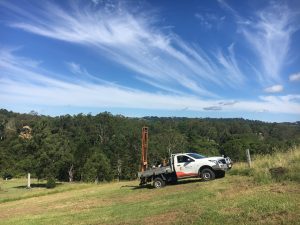
This is a process that has been designed, developed and described in detail in “Australian Standard AS 2870-2011″ and supplements. The document is very comprehensive and is subject to regular review and up-dating. Australian Standard AS 1726, “Geotechnical Site Investigations” details how the bore logs should be written.
AS 2870-2011, in essence, sets out a system whereby a house site is classified according to its bearing qualities and potential surface movements and other site parameters, such as slope, vegetation, rock, drainage. Site Classification is performed to allow the selection of standard footing designs. General definitions of classification range from sites that have little or no ground movement from moisture changes through to those that have large movements which significantly affect the footing and slab design. Bearing capacity of the soil to take the load of a structure is also an important part of a site investigation. Where conditions are extreme, then a non-standard footing design is prepared by an engineer.
The standard footing design may need modification according to the type of house. Thus a masonry structure would be much heavier than a cladded frame or a two story building compared to one story. It should be noted that this classification system refers to houses. Commercial, industrial and institutional buildings will have their own unique design features.
Moisture causes clay to expand and then to contract when dry conditions prevail. In dryer climates further away from the coast the surface movements can be extreme, the standard requires three (3) deeper than normal boreholes per house site to pick up any changes and ensure a better picture of the soils that the house will be founded on. This movement can damage foundations and thus the building itself unless such factors are taken into account in the foundation design. Post construction owners must exercise control to avoid adverse moisture conditions e.g. by proper drainage and by being aware of the effect that tree roots will have in removing moisture below the footings. Some clays are more reactive than others. That is they respond to moisture more so than others. The presence of fill must be taken into account and provided for in the design.
Other conditions that may occur are: Sites that have fill, sites that include soft soils such as soft clay or silt or loose sand; landslip, mine subsidence; collapsing soils, subject to erosion or subject to unusual moisture conditions. These are the conditions that may require a non-standard footing design by an engineer.
Site Classification will be carried out by our highly trained and experienced licenced Site Classifiers. Our staff will use a variety of equipment to carry out on site tests and to collect samples for laboratory testing.